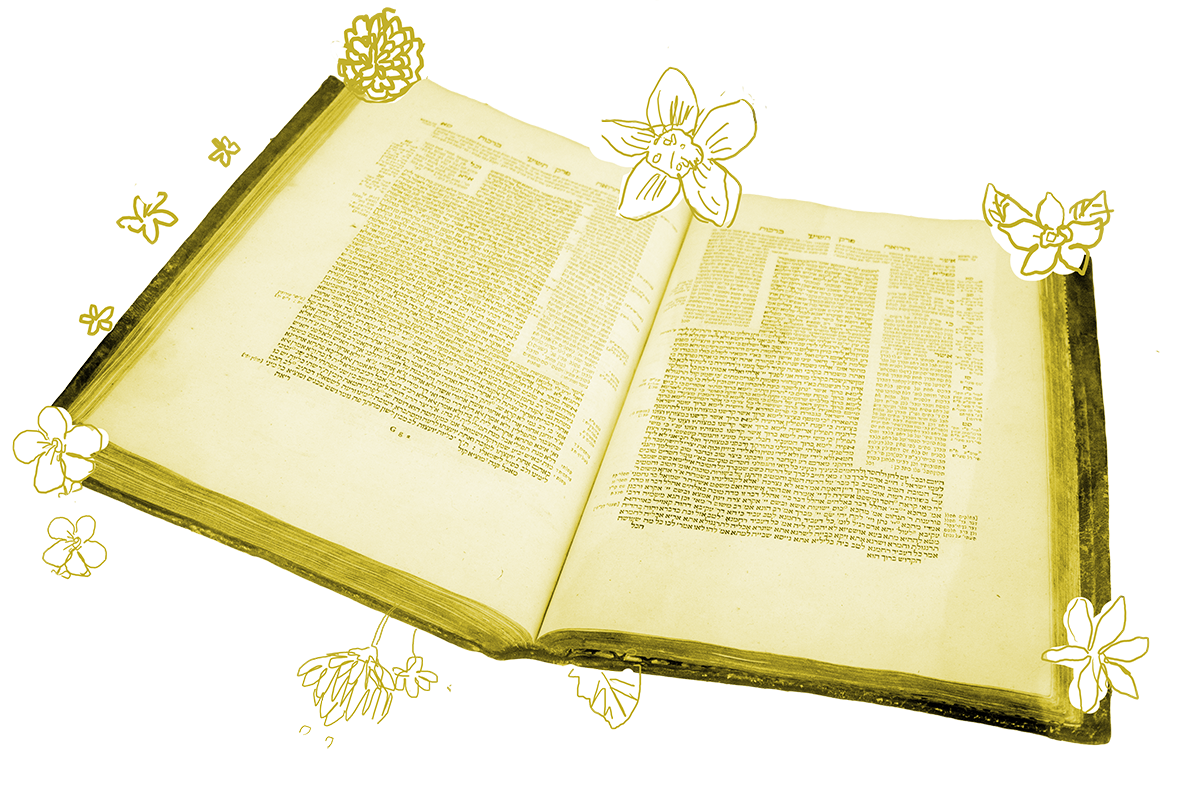In the previous chapter of Yevamot, we explored a variety of situations that may (or may not) require yibbum. Today’s daf examines a different situation: What if someone engages in yibbum when it’s not required?
The mishnah lays out the case: A man dies childless, and his widow and brother perform halitzah to dissolve the levirate bond. The widow is then discovered to have been pregnant with her dead husband’s child. The mishnah concludes that if the widow miscarries, then halitzah was indeed required because the dead husband had no offspring. As a result, the woman is considered akin to a divorcee: Both she and the surviving brother are forbidden to marry each other’s relatives, and she is disqualified from marrying into the priesthood. But if the child is viable, then halitzah was never required in the first place and thus the ritual has no legal status. In that case, both the widow and brother may marry each other’s relatives and the woman can marry into the priesthood.
The Gemara then presents a dispute between Rabbi Yohanan and Reish Lakish over whether, in a case where the woman miscarried, a second round of halitzah is necessary or if the first was sufficient. Rabbi Yohanan says one is enough, while Reish Lakish says another round is necessary. The Gemara next presents not one, not two, but three (or even more, depending on how you count) versions of what this dispute may have actually been about.
Space constraints prevent us from exploring all of them, but let’s take a look at one:
With your help, My Jewish Learning can provide endless opportunities for learning, connection and discovery.
And if you wish, say that Rabbi Yohanan holds: The Merciful One states: “If brothers dwell together, and one of them dies, and he has no child” (Deuteronomy 25:5). And this man does not have any children. And Reish Lakish holds: The phrase “and he has no [ein] child” means one should inspect [ayein] him.
One version states that the crux of the disagreement is in understanding the verse from Deuteronomy from which the levirate obligation is derived. According to Rabbi Yohanan, the verse states that halitzah is required if a husband had no child when he died, so the first halitzah was necessary and adequate. Reish Lakish engages in a bit of wordplay, connecting the word for “no” (ein) to the word for “inspect” (ayein), concluding that an investigation is required at the moment of death to determine if the husband in fact had offspring. Until that investigation concludes with either the birth of a child or a pregnancy that doesn’t yield a child, there is no requirement of halitzah and the first ritual is ineffective.
Rabbi Yohanan responds by citing the mishnah’s ruling that in the case of a miscarriage, the first halitzah renders the woman forbidden from marrying into the priesthood. If Reish Lakish is right and a second halitzah is required, how could it be that the first round was invalid? Certainly it was valid enough to render the woman prohibited from marrying a priest.
Here’s Reish Lakish’s response:
(The mishnah’s ruling is) by rabbinic decree and is merely a stringency.
According to Reish Lakish, the mishnah’s conclusion isn’t explicit from the verse in Deuteronomy. Instead, it’s simply the rabbis being extra strict to ensure that people don’t misread the situation and conclude that a widow who has gone through halitzah can then marry a priest. In fact, the woman is not prohibited from marrying a priest on the basis of that first halitzah — at least by Torah law.
While this position might seem extreme, there’s plenty of precedent in Jewish tradition of going beyond the letter of the law to ensure that no one runs afoul of prohibitions in the Torah.
Read all of Yevamot 35 on Sefaria.
This piece originally appeared in a My Jewish Learning Daf Yomi email newsletter sent on April 11th, 2022. If you are interested in receiving the newsletter, sign up here.



